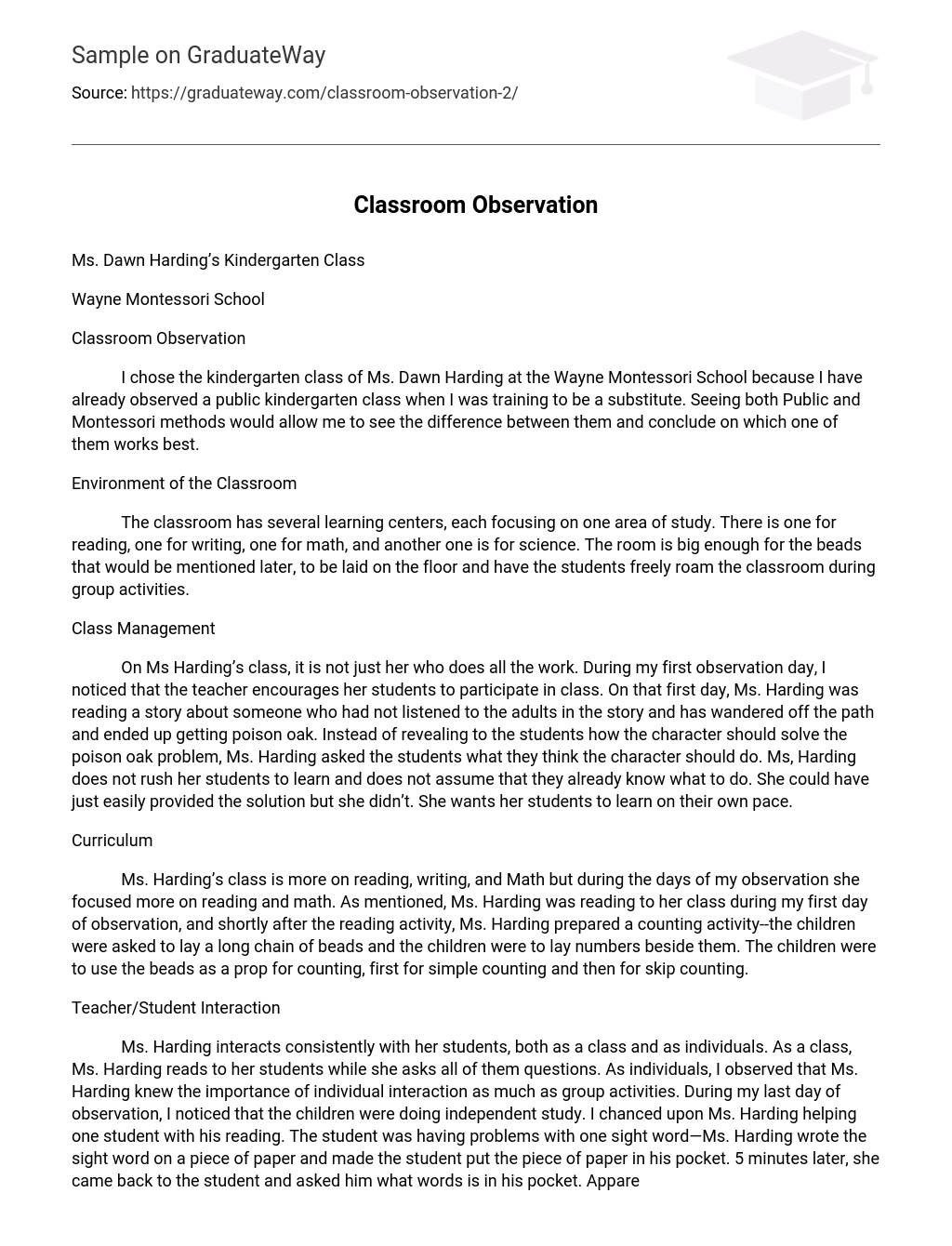Ms. Dawn Harding’s Kindergarten Class
Wayne Montessori School
Classroom Observation
I chose the kindergarten class of Ms. Dawn Harding at the Wayne Montessori School because I have already observed a public kindergarten class when I was training to be a substitute. Seeing both Public and Montessori methods would allow me to see the difference between them and conclude on which one of them works best.
Environment of the Classroom
The classroom has several learning centers, each focusing on one area of study. There is one for reading, one for writing, one for math, and another one is for science. The room is big enough for the beads that would be mentioned later, to be laid on the floor and have the students freely roam the classroom during group activities.
Class Management
On Ms Harding’s class, it is not just her who does all the work. During my first observation day, I noticed that the teacher encourages her students to participate in class. On that first day, Ms. Harding was reading a story about someone who had not listened to the adults in the story and has wandered off the path and ended up getting poison oak. Instead of revealing to the students how the character should solve the poison oak problem, Ms. Harding asked the students what they think the character should do. Ms, Harding does not rush her students to learn and does not assume that they already know what to do. She could have just easily provided the solution but she didn’t. She wants her students to learn on their own pace.
Curriculum
Ms. Harding’s class is more on reading, writing, and Math but during the days of my observation she focused more on reading and math. As mentioned, Ms. Harding was reading to her class during my first day of observation, and shortly after the reading activity, Ms. Harding prepared a counting activity–the children were asked to lay a long chain of beads and the children were to lay numbers beside them. The children were to use the beads as a prop for counting, first for simple counting and then for skip counting.
Teacher/Student Interaction
Ms. Harding interacts consistently with her students, both as a class and as individuals. As a class, Ms. Harding reads to her students while she asks all of them questions. As individuals, I observed that Ms. Harding knew the importance of individual interaction as much as group activities. During my last day of observation, I noticed that the children were doing independent study. I chanced upon Ms. Harding helping one student with his reading. The student was having problems with one sight word—Ms. Harding wrote the sight word on a piece of paper and made the student put the piece of paper in his pocket. 5 minutes later, she came back to the student and asked him what words is in his pocket. Apparently, it works.
Montessori Method vs Public Method
The Montessori Method works and is even better than the public method of teaching. The Montessori Method is also better than the traditional public method because it is child-centered, it allows students to do activities on their own under the watchful eyes of the teacher. It also better than the public method because it does not force the students to learn, it adapts to the level of the child and modifies the learning environment depending on the level of the child. (Smith, 2009).
Reference
Smith. M. K. (2009). Maria Montessori and Informal Education. Retrieved May 6, 2009.
From http://www.infed.org/thinkers/et-mont.htm





